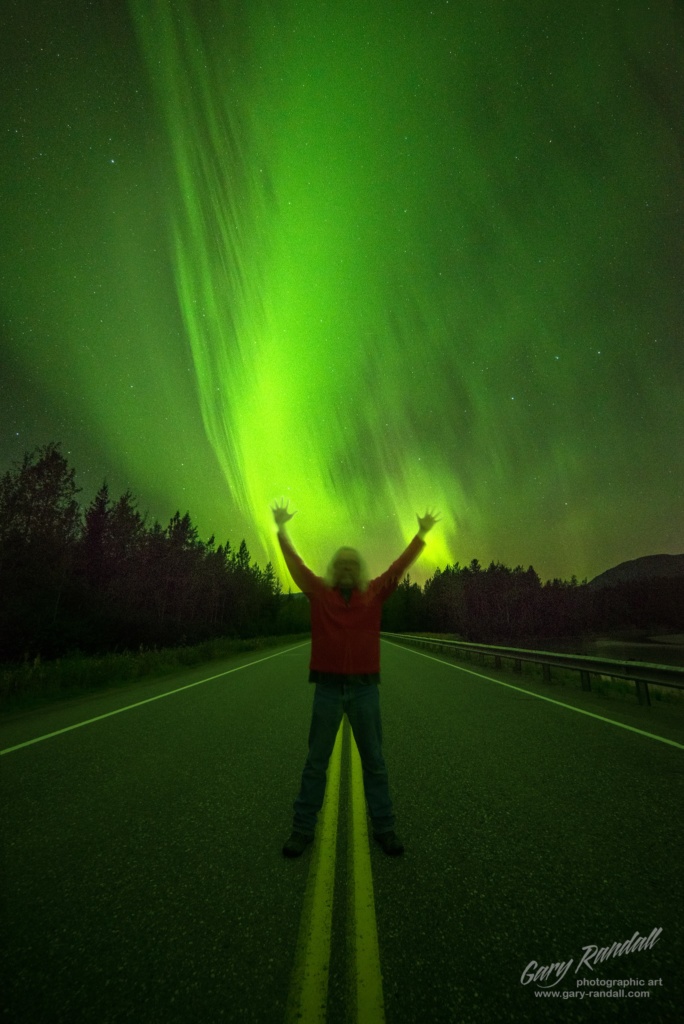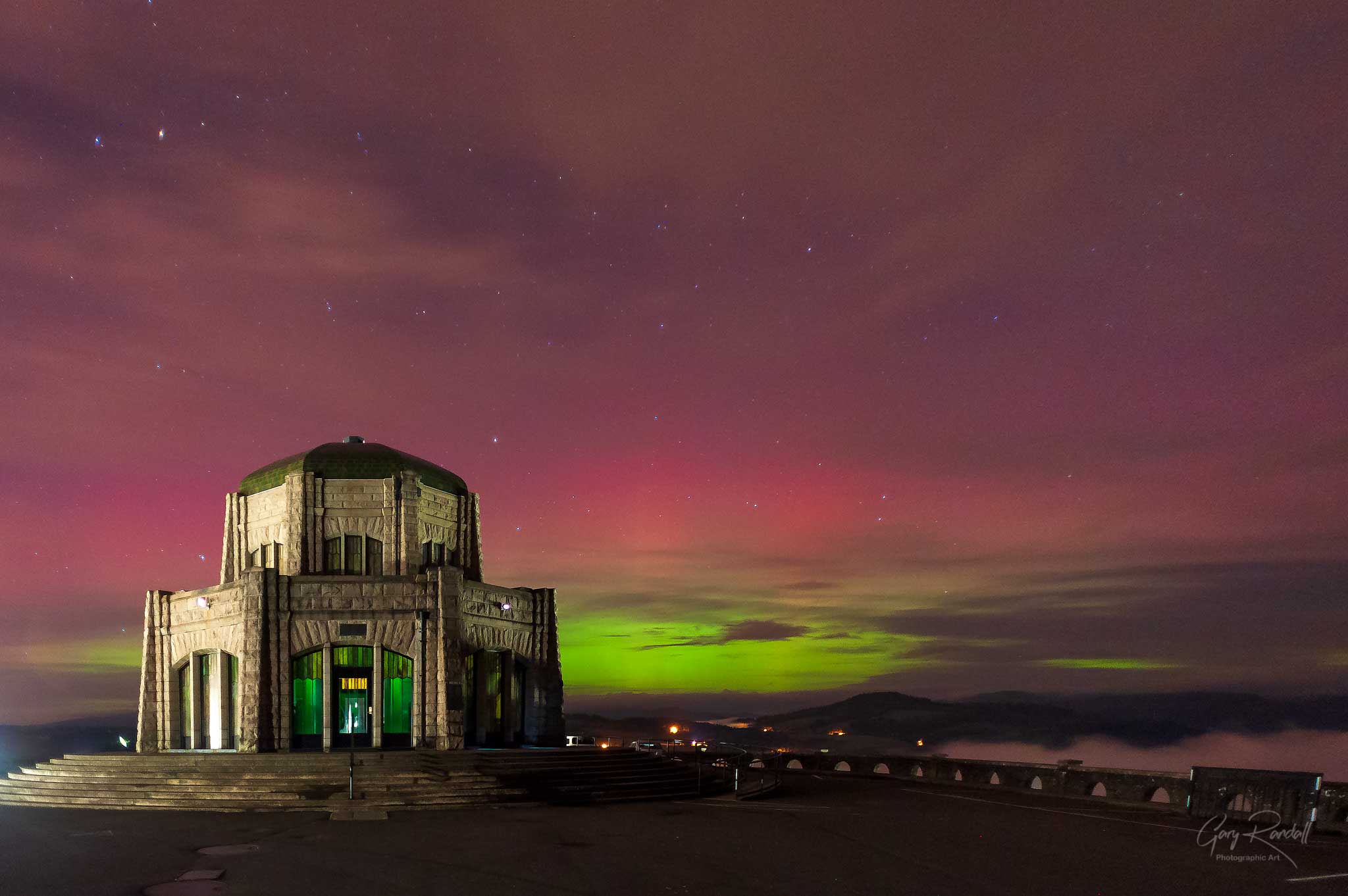I will never forget the first time that I saw the Northern Lights. It was on my first trip to Alaska. I’m talking a real, bright, dynamic display straight above my head and not a faint glow off on the distant horizon like I have seen in Oregon in the past. In Oregon the Aurora could barely be seen with the human eye but was clear to the camera’s sensor after a relatively long exposure.
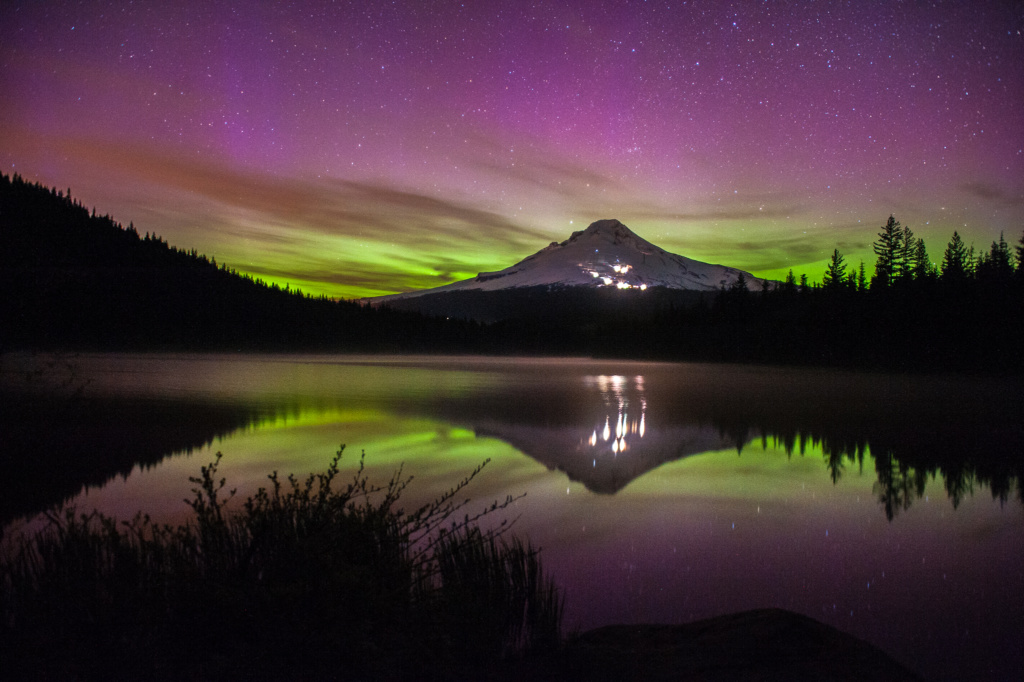
Photographing the aurora in Oregon required that I set the exposure at around 19 seconds or less on average because of how dim that they were. There was no real definition in the glow nor was there any discernable movement in the light. It was mostly a colorful glow.
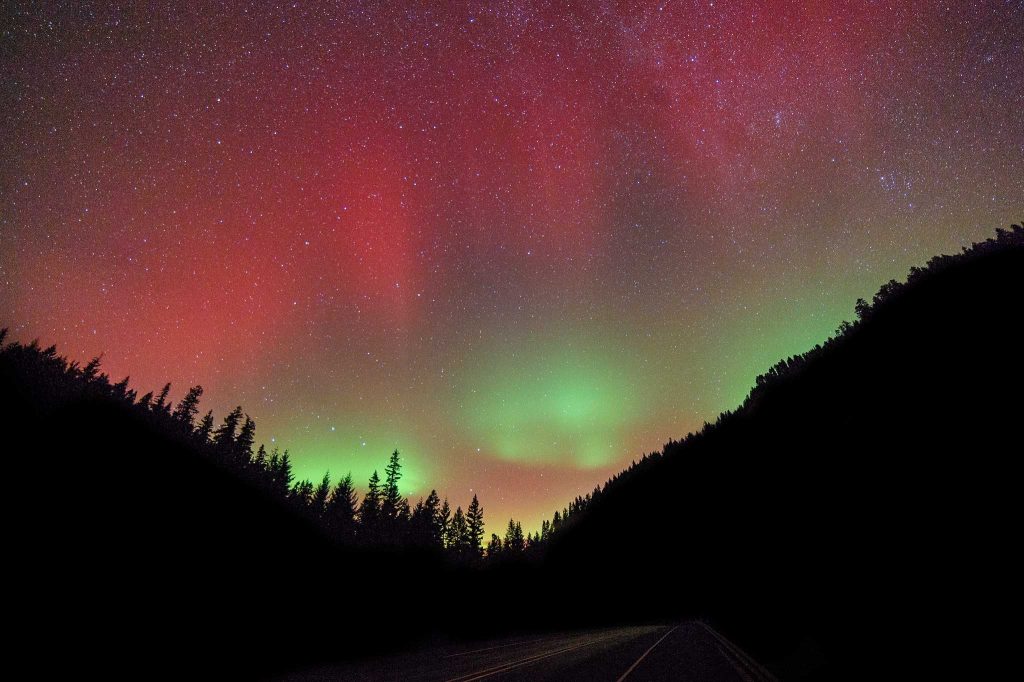
My first real experience with the aurora was on a trip to Alaska to visit my wife, who was my girlfriend at the time, who was living near Palmer in a cabin on the edge of the Knik River. My flight arrived at Anchorage at approximately 11pm. Darlene came to pick me up at the airport before we drove to her cabin, arrived there at around midnight. We were sitting in her dining room discussing the lay of the land that surrounded her home when I asked if it would be practical to take a midnight stroll to the river. She said that it would be fun so we grabbed our tripods and cameras and off we went.
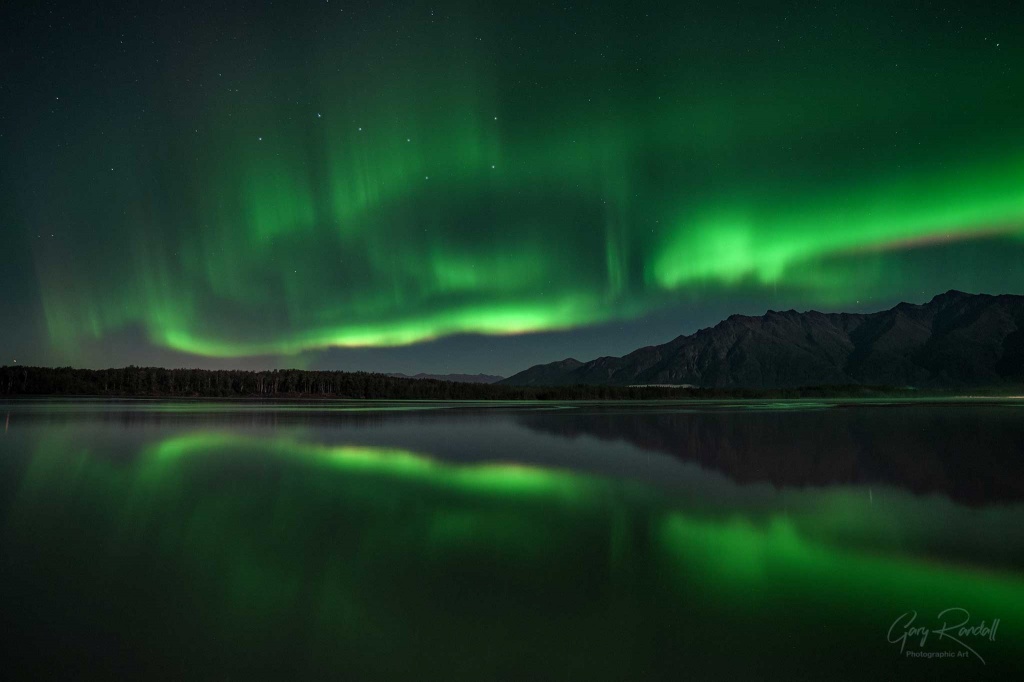
It was a moonlit night, which would completely cancel any chances of seeing an aurora in Oregon, but I hadn’t even considered that there would be a chance of seeing it anyway. Off we went down a path and through the forest that lined the edge of the river. As soon as my eyes had adjusted to the night and we were about to emerge from the trees I could see a beautiful green light in the sky. When we got to the beach at the edge of the Knik River I was amazed by the scene before me. In front of us was the placid and mirror like water of the Knik River and just beyond in the distance stood the rugged peaks of the Chugach Mountains and above it all was the most incredible aurora. The lights were a vivid green and were moving like curtains in a soft breeze. Over my right shoulder was a moon illuminating the scene. The whole scene was reflected in the surface of the river that slowly flowed past in front of us. Of course I was completely blown away by the view and didn’t know if I should stand and watch it or divert my attention to photograph it. Of course I set up and proceeded to take some photos.
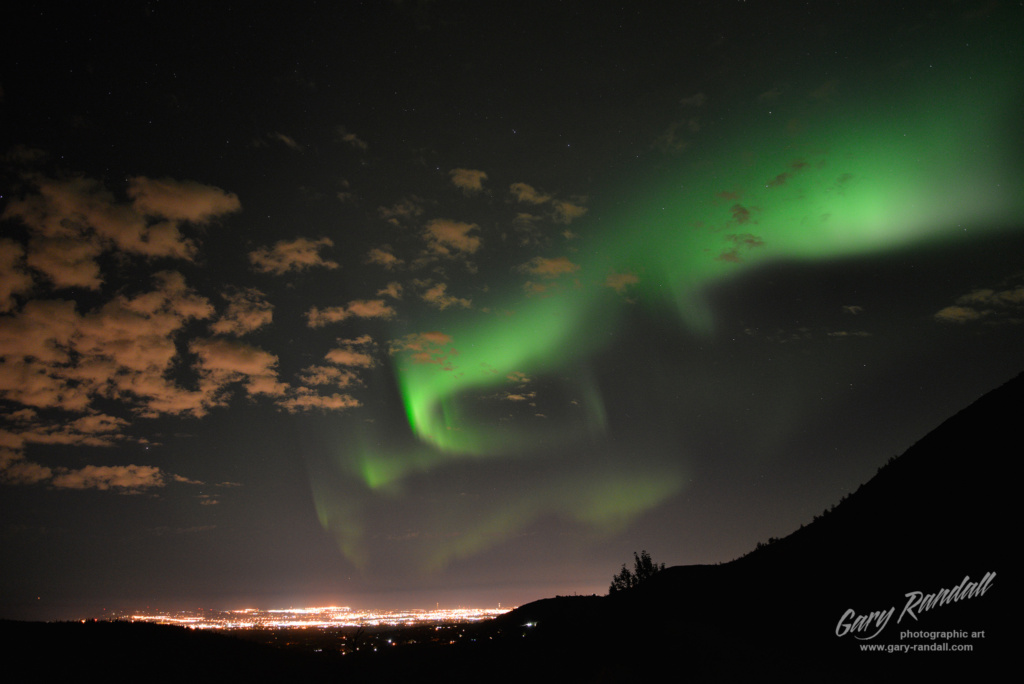
My approach to setting up to get the photos was to start with some longer exposures. That’s the approach that I would take for most any night photos, and was my experience with the aurora here in Oregon, but when I reviewed the photos and looked closely at them the definition of the curtains that I saw was gone. The aurora looked like just a big green cloud or something similar. Then it occurred to me that the lights were moving and were blending together during the long exposure. I thought that I should use what I’ve learned about photographing a moving creek. If I expose longer the water smears. If I want to freeze it I want ta fast shutter speed.
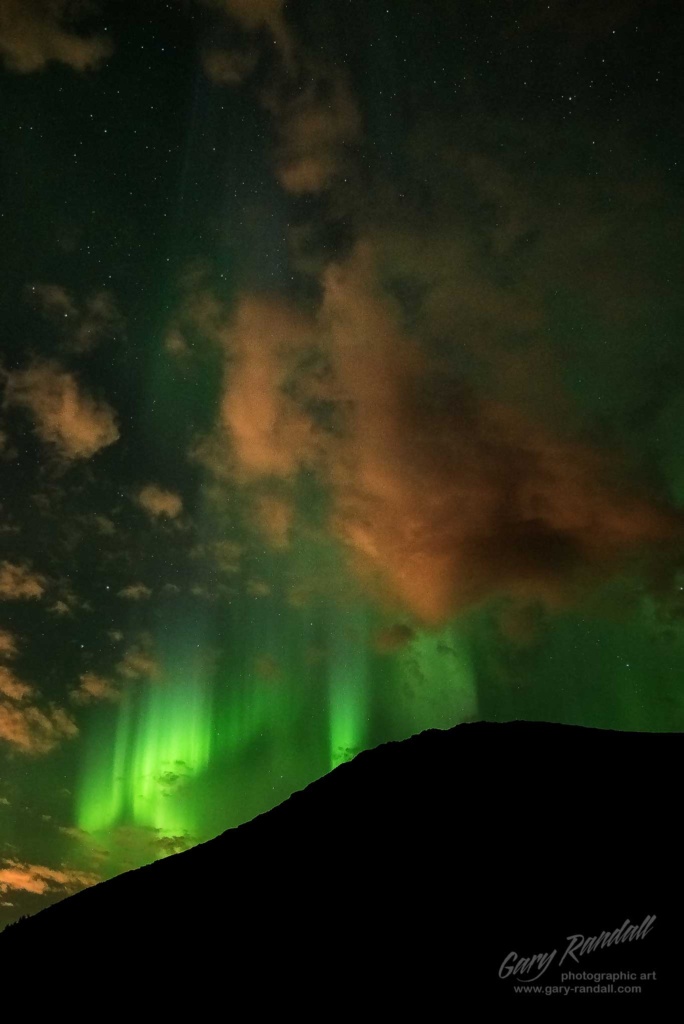
At that point I started to raise my ISO and shorten my shutter speed. I also made sure that I didn’t underexpose the shots. By making sure that the photos were exposed properly, and wouldn’t require me to raise the exposure in post, I would reduce the chance of ISO noise from using a higher ISO. That’s something that I can’t stress enough. It is better to use a higher ISO and to expose the photos properly than to use a lower ISO and underexpose the shots and then raise it in post. When you raise the exposure of an underexposed photo the noise will be greater than one with a higher ISO that was exposed brighter.
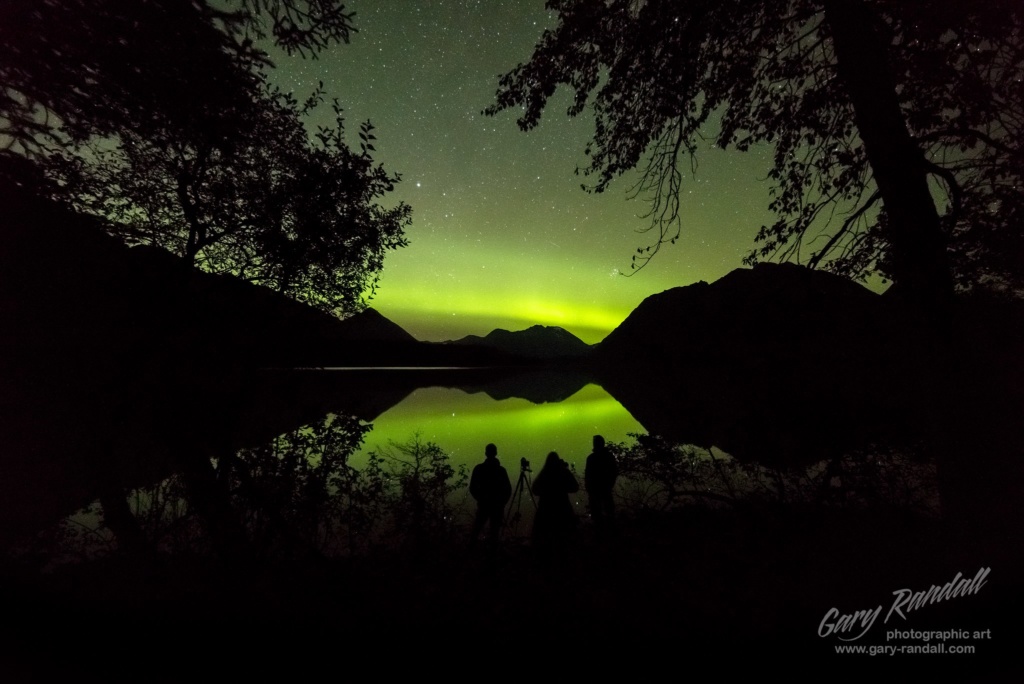
Next make sure that you check your exposure by using the histogram. There are two reasons to keep an eye on your histogram. The first is to make sure that you’re ETTR – Exposed To The Right, as much as possible and to make sure that you’re not over exposing the aurora. On exceptionally active auroras the light can be quite bright.
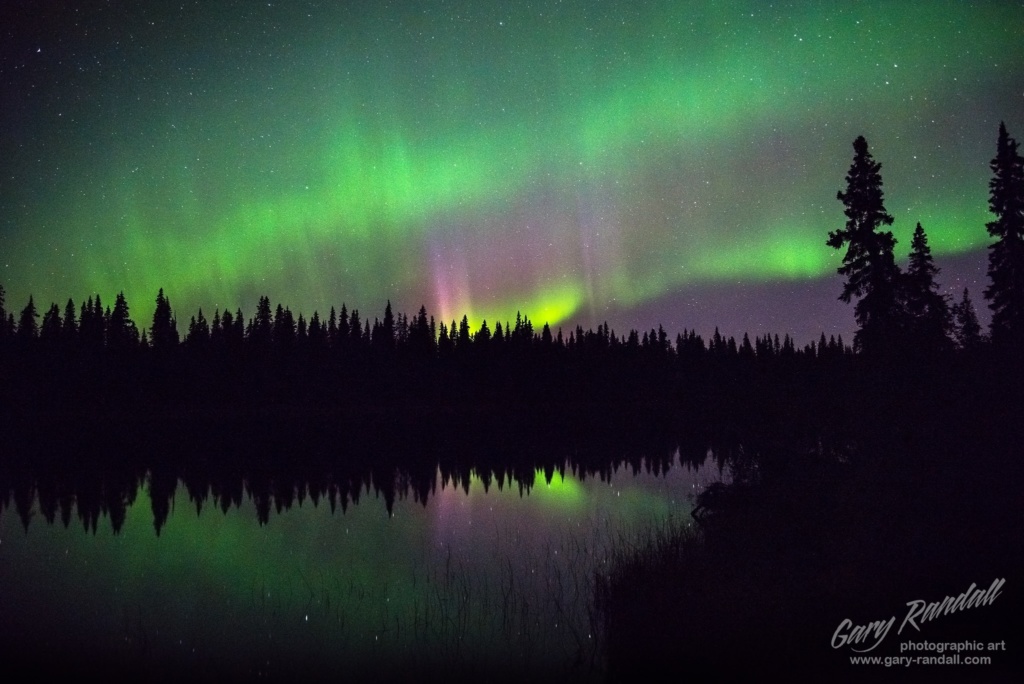
And so the short answer to the question about how to photograph the Northern Lights would be to use a shutter speed that is as quick as possible. I wouldn’t recommend exposing longer than 2-3 seconds in Alaska, and 10-20 seconds in Oregon, for instance. It’s acceptable to use a larger aperture opening (f/2.8-f.3.5) to bring more light in, which will help to shorten your exposure time. And last but not least don’t be afraid to raise your ISO. In the case of the aurora it would be better to have a more defined aurora than one that is smoothed together from a long exposure.
The last thing to remember is that although you’re using a quicker exposure to capture the lights, the exposure times will still be too long to hand hold so don’t forget to bring your tripod.
Summary:
- Use as fast a shutter speed as possible
- Use an open aperture
- Raise you ISO
- Use your histogram
- Use a tripod
- And don’t forget to take time to just watch and experience the incredible light show.
